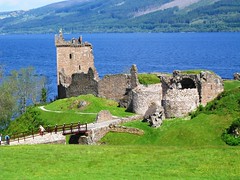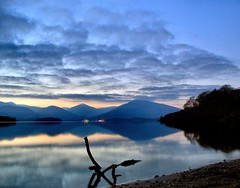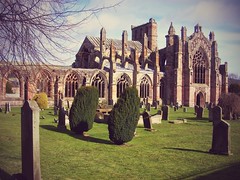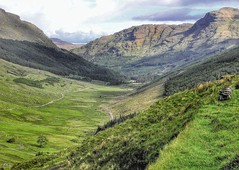RAF Leuchars Airshow 07/09/00
TAKE TO THE SKIES
Air travel may be increasingly commonplace
but our fascination for flight shows no sign of abating. The popularity
of the annual air extravaganza at RAF Leuchars in Fife is evidence
of that.
Each year tens of thousands of spectators flood in through the gates
of the operational air force base to see one of only two military
air shows in the UK.
After last year's cancellation due to operational duties in Kosovo,
this year's display on September 16 is expected to attract even
greater crowds.
With some major new attractions including the world record breaking
supersonic car and a celebration to mark the 60th anniversary of
the Battle of Britain, as many as 55,000 people could make the trip
to the base this year.
Deputy Air Show Manager Alison Mackenzie reckons this year's Millennium
Display will also have the best flying displays there has ever been.
"We are the only air show in the UK to have all three of Europe's
premier aerobatic display teams taking part," she said.
"The Red Arrows and the French team
Patrouille de France will be here but the Frecce Tricolori from
Italy are coming back this year as well. They haven't been here
since 1996 so it's great to have them back. They are a huge draw
and very exciting."
A whole range of military and civilian aircraft from around the
world will also be on static display at the show including an Iroquois
helicopter and an F16 from the USA, a Mirage from France, an F4F
Phantom and MiG 29 Fulcrum from Germany and a Chinook helicopter
from the UK.
And there'll be plenty of airborne
action too with Harriers, Nimrods, Tornados Viggens and Tucanos
taking to the skies above Fife during the seven hours of flying
displays.
There will also be a Battle of Britain
Memorial Flight and breathtaking performances by the Golden Lions
Parachute Display Team and the Army Air Corps Blue Eagles Team.
While the airshow is a dream for flight
fans, Alison is keen to stress there are other attractions too.
"It's not just aeroplanes," she insists.
"We have the Thrust SSC (supersonic car) on static display for the
first time this year. It broke the world land speed record in the
Nevada Desert in 1997 and its driver is now a Squadron Leader at
Leuchars.
"We also have a craft fare, a large
fun fare and over 100 outdoor traders and 34 indoor traders at the
show. There's a public catering hangar, mobile snack vans and a
veterans area. There really is something for everyone."
Alison does concede, however, that the chance to see so many aircraft
inside a fully operational air base is still one of the airshow's
biggest attractions.
"It is a bit different," she says. "It's not every day you have
all these jets to look at. It is a military air show with jets from
all over the world. It's a unique opportunity to see an operational
RAF station.
"There are only two airshows in the UK put on by direction of the
air force board. The idea is to show the RAF to the public and let
them see what it is all about and what is involved.
"The army will also be here so visitors can meet the people actually
doing the job. The static aircraft displays all have members of
staff at them so visitors can talk to them and ask them about the
displays and what the job entails."
Although preparations for this year's show are nearing completion
the work will continue for Alison and her colleagues as soon as
the last of the visitors heads home.
"As soon as one air show is over we start planning for the next
one with bids going out for displays for the following year," she
said. "People also approach us to fly here. It is very popular and
people want to take part but we also put bids out to foreign embassies
for displays."
As in previous years ScotRail will be running special shuttle
trains to and from Leuchars train station and this year car parking
at the base is free. Gates open at the base at 8am and the flying
displays start at 10am and finish at 5pm.
Tickets are priced £8 for adults, £5 for senior citizens and children
aged five to 15 if purchased in advance and £10 and £6 respectively
if bought on the day.
For more information contact the Airshow Office on 01334 838 559
or visit the web site at: http://www.airshow.co.uk
Here is more text about edinburgh hotels including links to some other pages within the site


 The centre also boasts a piping museum charting the history of the pipes in Scotland and Europe. Assembled by the National Museum of Scotland it draws on collections from the Royal Scottish Museum, the National Museum of Antiquities of Scotland and Scottish United Services Museum.
The centre also boasts a piping museum charting the history of the pipes in Scotland and Europe. Assembled by the National Museum of Scotland it draws on collections from the Royal Scottish Museum, the National Museum of Antiquities of Scotland and Scottish United Services Museum. 





